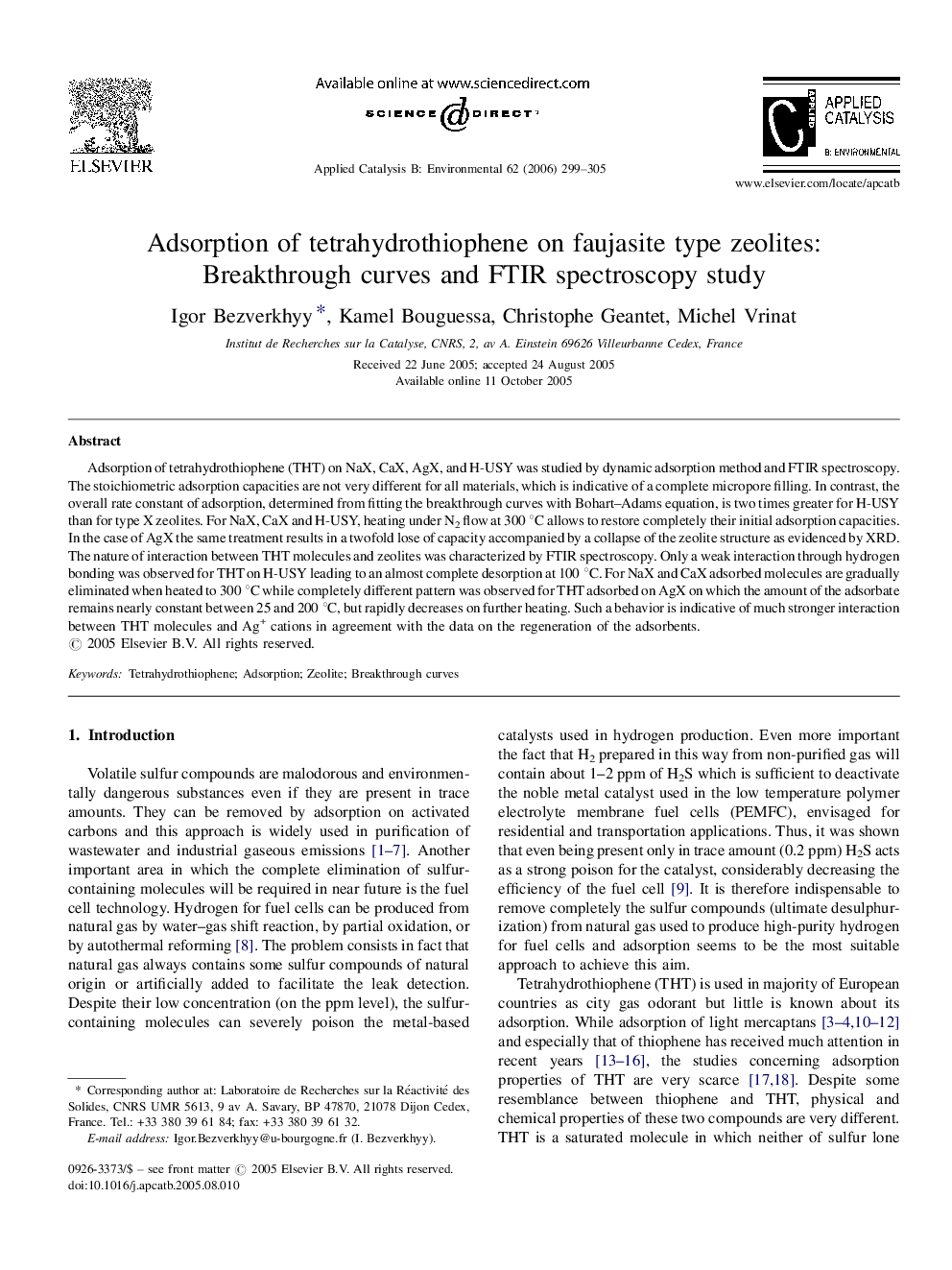| Article ID | Journal | Published Year | Pages | File Type |
|---|---|---|---|---|
| 49069 | Applied Catalysis B: Environmental | 2006 | 7 Pages |
Adsorption of tetrahydrothiophene (THT) on NaX, CaX, AgX, and H-USY was studied by dynamic adsorption method and FTIR spectroscopy. The stoichiometric adsorption capacities are not very different for all materials, which is indicative of a complete micropore filling. In contrast, the overall rate constant of adsorption, determined from fitting the breakthrough curves with Bohart–Adams equation, is two times greater for H-USY than for type X zeolites. For NaX, CaX and H-USY, heating under N2 flow at 300 °C allows to restore completely their initial adsorption capacities. In the case of AgX the same treatment results in a twofold lose of capacity accompanied by a collapse of the zeolite structure as evidenced by XRD. The nature of interaction between THT molecules and zeolites was characterized by FTIR spectroscopy. Only a weak interaction through hydrogen bonding was observed for THT on H-USY leading to an almost complete desorption at 100 °C. For NaX and CaX adsorbed molecules are gradually eliminated when heated to 300 °C while completely different pattern was observed for THT adsorbed on AgX on which the amount of the adsorbate remains nearly constant between 25 and 200 °C, but rapidly decreases on further heating. Such a behavior is indicative of much stronger interaction between THT molecules and Ag+ cations in agreement with the data on the regeneration of the adsorbents.
